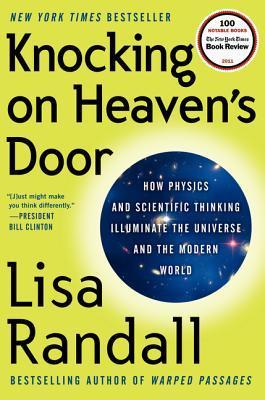What do you think?
Rate this book


442 pages, Hardcover
First published January 1, 2011

In the end, black holes don't pose any danger. But just in case, I'll promise to take full responsibility if the LHC creates a black hole that gobbles up the planet.Randall then devoted a chapter to the subject of risk, and how people often do not properly account for relative risks. She gives examples of bad risk assessments, such as the BP oil spill in the Gulf of Mexico, and the financial machinations of AIG Financial Products, and the subprime mortgage crisis. She draws an interesting analogy between the danger of black holes and the real "black-hole risk" of the financial crisis. On a radio show, Randall was asked
"whether I would proceed with an experiment--no matter how potentially interesting--if it had a chance of endangering the entire world. To the chagrin of the mostly conservative radio audience, my response was that we are already doing such an experiment with carbon emissions.
